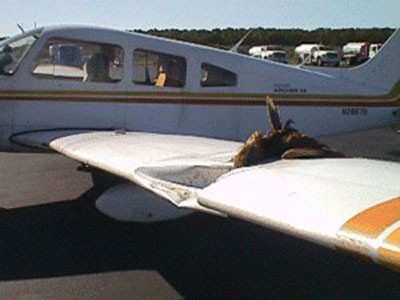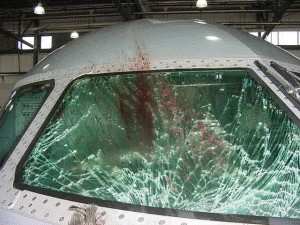Sat, Aug 25, 2012
Airports Are Required To Create And Implement Plans To Minimize Wildlife Hazards
In a report released Wednesday, the DOT's Inspector General found that FAA’s oversight and enforcement activities of its Wildlife Hazard Mitigation Program are not sufficient to ensure airports fully adhere to Program requirements or effectively implement their wildlife hazard plans. Under the Program, FAA requires airports to create and implement wildlife hazard management plans to assess and minimize the risk of future strikes.

"(The) FAA has not developed robust inspection practices, and its inspectors do not have the technical expertise to effectively oversee the Program," the report says. "Inspectors we spoke with mostly relied on interviews with airport personnel to determine compliance with regulatory requirements, rather than reviewing strike and airport records. Also, inspectors were not maintaining adequate records of their inspection activities."
The FAA’s policies and guidance for monitoring, reporting, and mitigating wildlife hazards are mostly voluntary, thereby limiting their effectiveness. For example, FAA recommends but does not mandate that airports and aircraft operators report all wildlife strikes to FAA’s strike database. As a result, FAA’s strike data are incomplete, which impacts the Agency’s ability to evaluate the effectiveness of its Program in reducing wildlife hazards. Finally, FAA coordinates effectively with the U.S. Department of Agriculture Wildlife Services, its main partner in wildlife hazard mitigation, but its efforts to coordinate with other relevant Government agencies are limited and infrequent.
The IG made 10 recommendations intended to improve FAA’s management and oversight of the Program. In its response, the FAA concurred with six, partially concurred with three, and did not concur with one. The IG said it is requesting additional information or revised responses for five recommendations—particularly related to improving the quality and quantity of the Agency’s wildlife strike data.

More News
Light Gun A handheld directional light signaling device which emits a brilliant narrow beam of white, green, or red light as selected by the tower controller. The color and type of>[...]
"The journey to this achievement started nearly a decade ago when a freshly commissioned Gentry, driven by a fascination with new technologies and a desire to contribute significan>[...]
Aero Linx: JAARS, Inc. For decades now, we’ve landed planes on narrow rivers and towering mountains. We’ve outfitted boats and vehicles to reach villages that rarely se>[...]
"Our driven and innovative team of military and civilian Airmen delivers combat power daily, ensuring our nation is ready today and tomorrow." Source: General Duke Richardson, AFMC>[...]
Aircraft Conflict Predicted conflict, within EDST of two aircraft, or between aircraft and airspace. A Red alert is used for conflicts when the predicted minimum separation is 5 na>[...]
 ANN's Daily Aero-Term (04.20.24): Light Gun
ANN's Daily Aero-Term (04.20.24): Light Gun Aero-News: Quote of the Day (04.20.24)
Aero-News: Quote of the Day (04.20.24) ANN's Daily Aero-Linx (04.21.24)
ANN's Daily Aero-Linx (04.21.24) Aero-News: Quote of the Day (04.21.24)
Aero-News: Quote of the Day (04.21.24) ANN's Daily Aero-Term (04.21.24): Aircraft Conflict
ANN's Daily Aero-Term (04.21.24): Aircraft Conflict




